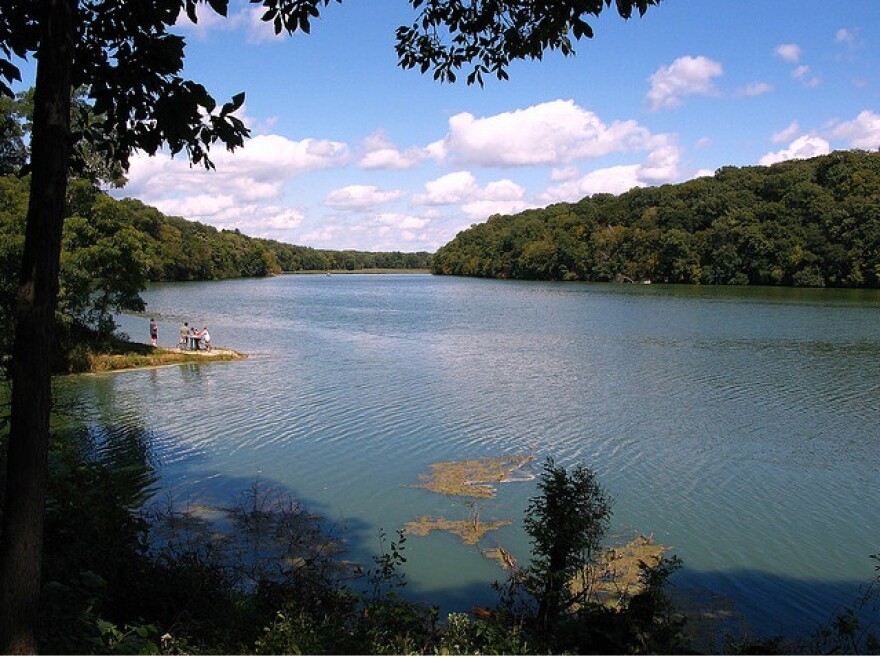Agricultural pollution in Iowa’s lakes and streams is so widespread that if conservation efforts continue at current rates, it could take thousands of years to meet some of the goals in Iowa’s Nutrient Reduction Strategy, according to a new analysis by the Iowa Environmental Council.
Environmentalists have long criticized the Nutrient Reduction Strategy, which is voluntary, for being insufficient and unable to address Iowa’s water quality issues. The state’s signature approach for dealing with persistent nitrate and phosphorous contamination, the NRS was implemented in 2013 in response to the federal Gulf Hypoxia Action Plan that calls for reducing nitrate and phosphorous pollution by 45 percent by 2035 in the Mississippi Rivershed.
But without enforceable metrics or consequences for missing benchmarks, the IEC calculates it could take lifetimes or even millennia for the state to meet goals outlined in the NRS.
“Our takeaways from years of analyzing the Nutrient Reduction Strategy is that it's just not an effective public policy. It doesn't adequately protect the public good,” said Alicia Vasto, the IEC’s Water Program Associate Director. “A policy without clear expectations or consequences for inaction is inherently ineffective and maintains the status quo.”
According to the IEC’s analysis, under one of the NRS’s scenarios for implementing conservation practices that soak up excessive nutrients, if current rates continue, it could take 85 years to plant enough cover crops, 942 years to build enough wetlands and more than 22,000 years to install enough bioreactors and saturated buffers.
Iowa Secretary of Agriculture Mike Naig has repeatedly hailed the voluntary efforts of farmers to adopt conservation practices, touting the department’s efforts to boost public engagement and funding.
“Efforts to improve water quality and soil health are happening all over Iowa. We have more partners and landowners engaged in conservation projects than ever before,” Naig said of practices quantified in the NRS annual report released last July.
While improvements are being made, the IEC counters that state officials overstate the impacts of current conservation efforts, which fall far short of the landscape-scale changes needed to address Iowa’s persistent ag-related pollution.
“For instance, as of 2018, Iowa had 973,000 acres of cover crops. This sounds like a large, positive number until it is put into context: to reach the cover crop acreage necessary to reach 45 percent nutrient reduction, 12.6 million acres must be in cover crops. In other words, 973,000 is less than 8 percent of the acres needed to be in cover crops,” the IEC report reads in part.
Naig dismissed as “propaganda” a recent report from national environmental group American Rivers labeling Iowa’s Raccoon River as one of the most endangered in the country, due to agricultural pollution.
Critics have tried to stop the construction of a feedlot in northeast Iowa, near the headwaters of a stream designated by the DNR as an outstanding waterway. Natural resources advocates say the feedlot has broader impacts on water quality in the state.https://t.co/AB3fV2cl9t
— Iowa Public Radio (@IowaPublicRadio) July 1, 2021
Meanwhile, runoff stemming from farm practices such as the extensive drainage of agricultural lands and the over-application of fertilizer and manure on farm fields is rendering some Iowa lakes unsafe for swimming and polluting drinking water sources in rural and urban communities.
Last summer, a toxic algae bloom in the Des Moines River, a main water source for the Des Moines Water Works, left the river “essentially unusable” for months at a time, while drought conditions significantly restricted flows in the Raccoon, one of the city’s other key sources.
As drought conditions have worsened this summer, public water systems large and small are implementing voluntary or mandatory water restrictions as low flows add more pressure to utilities already burdened by pollution.
Vasto says this summer’s drought underscores the gravity of Iowa’s water quality problems, which she says have reached “crisis” level.
“We are facing a water crisis here in Iowa right now,” Vasto said. “And it just becomes more apparent when these extreme situations happen where you have a drought that's limiting one water resource and you have an algae bloom in another that makes it too toxic to treat for drinking water.”
The council outlined a slate of policy proposals to address what it sees as the shortfalls of the NRS, calling for enforceable regulations on farm practices, rather than voluntary efforts.
The group’s policy proposals include adopting numeric nutrient criteria, expanding regulations of livestock operations, and funding the Natural Resources and Outdoor Recreation Trust Fund, which a clear majority of Iowa voters approved in 2010 but state lawmakers have refused to implement.





